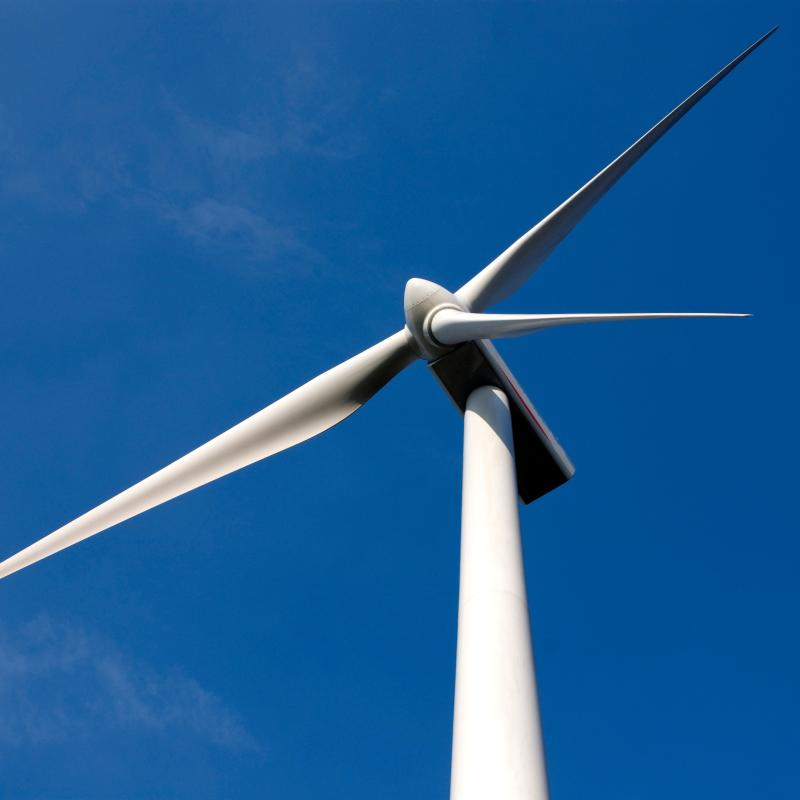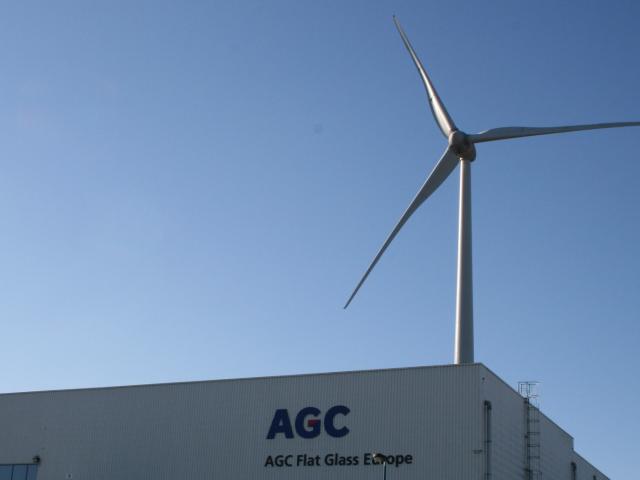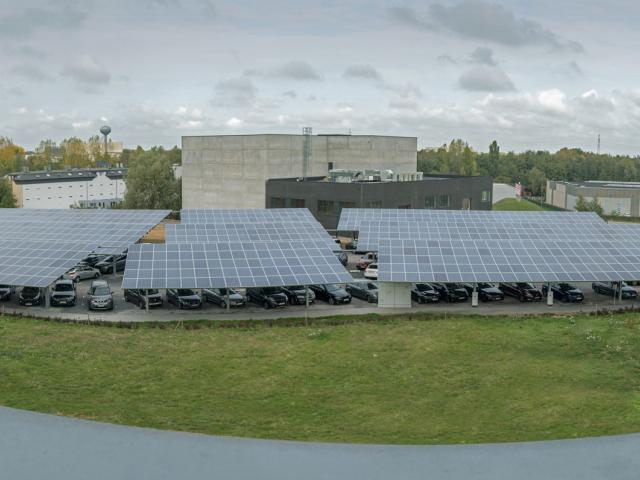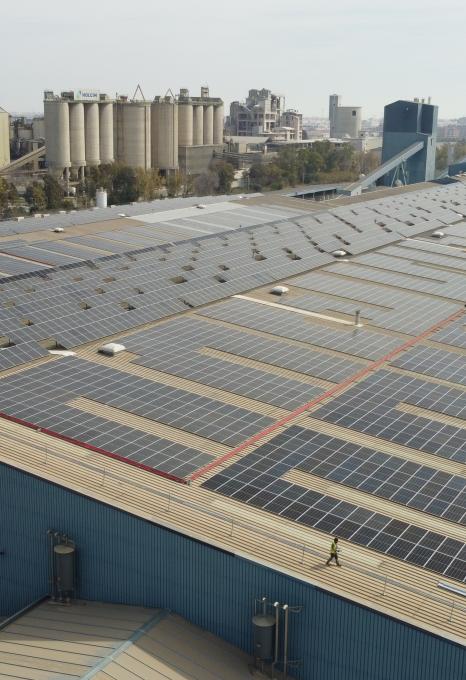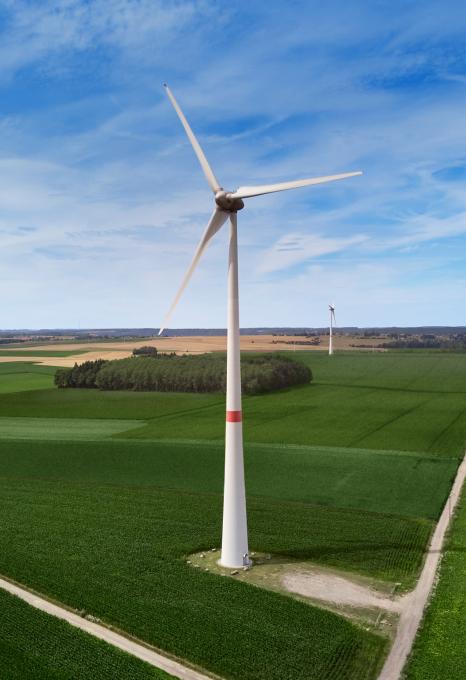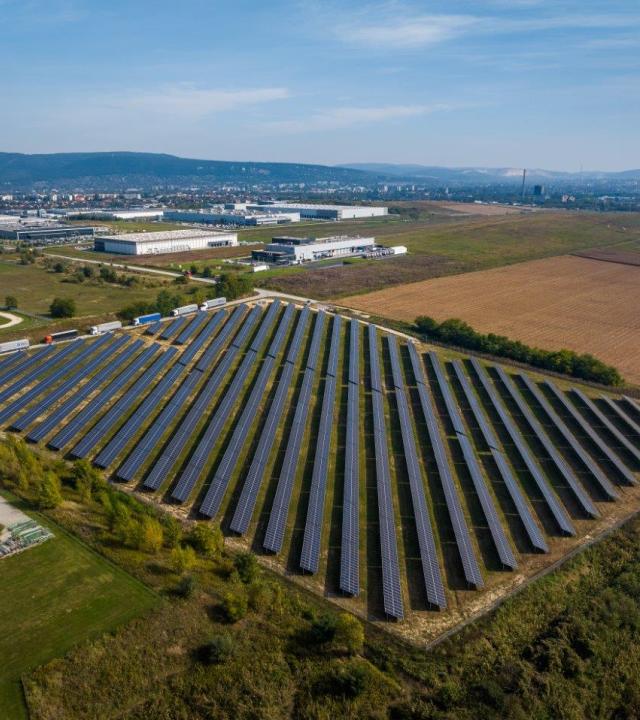Renewable and low-carbon electricity actions at AGC
AGC is actively implementing renewable and low-carbon electricity projects aimed at reducing our reliance on grid electricity and minimizing the associated CO2 emissions. These initiatives reflect our commitment to sustainability and contribute to our global goal of reducing our environmental footprint.
AGC investments in Power Purchase Agreements (PPA)
In Belgium, AGC Glass Europe signed an electricity purchase agreement with Luminus for an annual supply of around 67 GWh of renewable electricity (14 wind turbines), increasing the share of renewable energy in the total electricity consumption.
The installation of wind turbines at our sites
In Belgium, AGC partnered with Luminus for the construction of AGC's first on-site wind turbine in Seneffe in 2021. Luminus and AGC also intend to build one wind turbine on the AGC sites in Mol and in Zeebrugge.
The installation of PV panels on the roofs of offices and plants or on-site photovoltaic power plants
The first photovoltaic panels were installed at the Osterweddingen plant (Germany) and the Cuneo plant (Italy) in 2009 and 2010. Since then, other photovoltaic projects have been introduced at many other sites, amongst which large-scale PV panels at the Lodelinsart and Seneffe plants and the Technovation Center in Belgium. In July 2023, AGC and Helexia implemented one of the largest rooftop photovoltaic self-consumption plants in Spain at the Sagunto plant. Since November 2023, a solar facility operated by E.ON has provided AGC Glass Hungary with a source of renewable energy.
The most recently confirmed project concerns the installation of a photovoltaic power plant in partnership with energy company E.ON., at AGC's float plant in Seingbouse (France), and additional projects are under detailed study in Germany and Czech Republic.
The installation of heat recovery systems at our plants.
Heat recovery is the re-use of residual heat arising from a production process that would otherwise be lost, and which allows reduction of energy consumption. The heat recovery systems at AGC generate power by taking the residual heat of the flue gas from the glass melting furnace and converting it into electricity. This works either via an Organic Rankine Cycle (ORC) module that uses organic oil with a low boiling point or water as in a steam turbine generator.
Heat recovery systems were installed in AGC plants of Cuneo, Osterweddingen and Roccassecca. A new ORC plant for residual heat recovery has been installed in 2023 at AGC ‘s float glass plant in Seingbouse (France), in partnership with energy company E.ON. In 2024, the heat recovery systems (ORC) produced in total 16,564 MWh.
The installation of a cogeneration plant (CHP)
Cogeneration, also called Combined Heat and Power (CHP), is a very efficient technology to generate electricity and heat at the same time, allowing an important reduction of CO2 emissions and others air pollutants. The AGC plant in Cuneo (Italy) has a 7MW cogeneration plant, which is managed by the third part company Wedge Power. While the electricity produced is consumed by AGC, the heat generated in the cogeneration process is supplied to a district heating system covering the city of Cuneo. The produced heat covers almost all the needs of the municipality’s heating network. Moustier is also supplied in electricity and heat by a cogeneration plant installed in 2022 by third party investor CORETEC.
Guarantees of Origin
Renewable and low-carbon electricity projects at AGC play a pivotal role in reducing our reliance on grid electricity and minimizing associated CO2 emissions. These initiatives are complemented by AGC's commitment to sustainability through the use of Guarantees of Origin (GOs) for various sites, ensuring transparency and traceability in our renewable and low-carbon energy sourcing. Leveraging the AIB (Association of Issuing Bodies) system, AGC has secured GOs for 148 GWh of electricity in 2024, reinforcing our dedication to low-carbon energy solutions. This approach not only supports our environmental objectives but also enhances our contribution to the global energy transition. Furthermore, numerous additional projects are under study to further expand our low-carbon electricity portfolio, reflecting AGC's continuous improvement philosophy.
